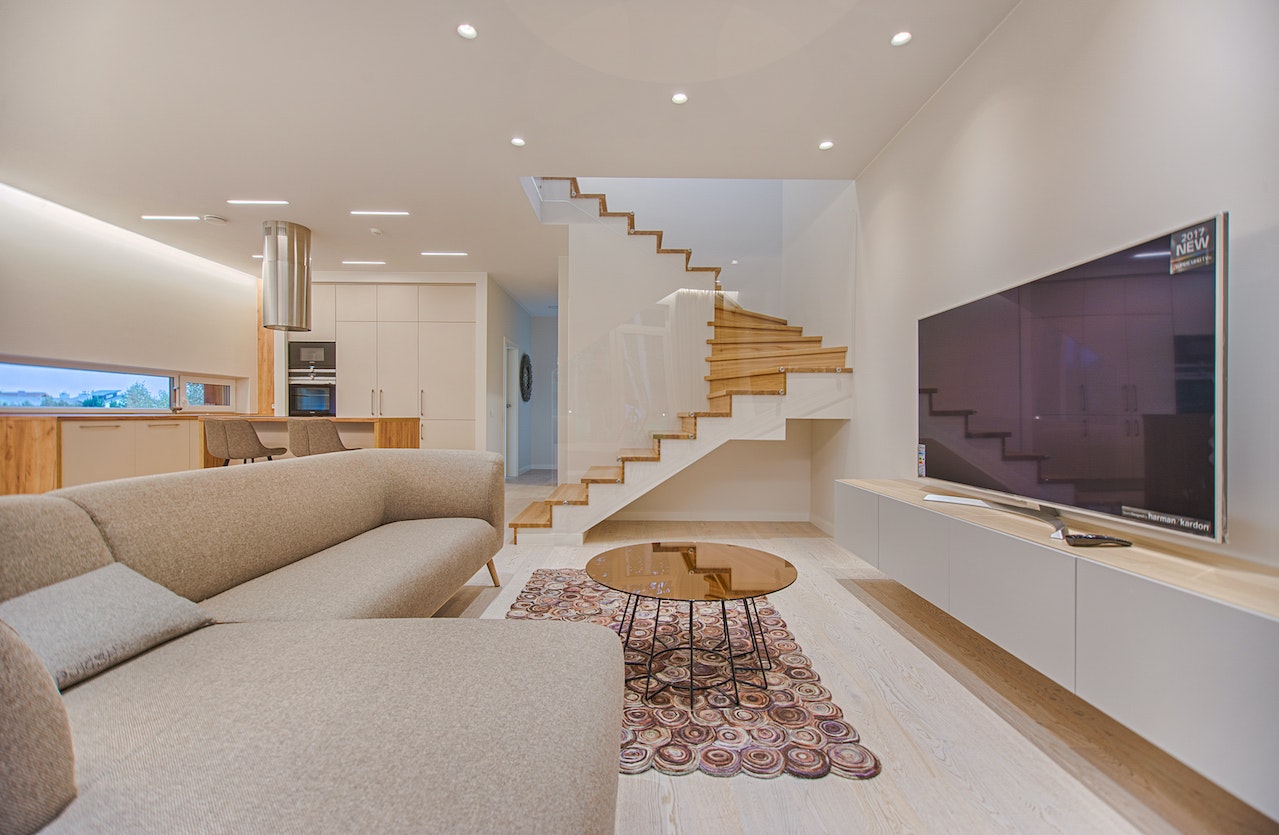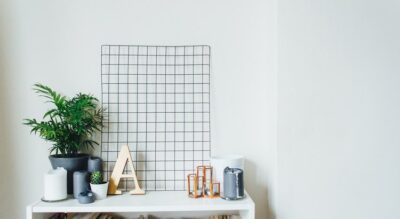How Do I Start My Career As A Professional Interior Designer?

So, you have decided to become an interior designer. Where to start? Surely this is not the first article on such a topic that you have discovered lately. So you still haven’t found the answers to some questions. Keep reading. Chances are, the answers are here.
We’ve put together a short guide to the profession to make it clear to you what an interior designer does, what skills he or she needs, and how, in fact, to make money from it. Let’s go.
Who Is An Interior Designer?
An interior designer is a person who creates a layout and aesthetically pleasing decoration. In this profession it is not enough just to have good taste: you need to make the room both beautiful and safe. To do this, it is important to know the rules of ergonomics and construction standards, otherwise the interior will be just a beautiful picture, uninhabitable.
The designer’s activity involves different activities during the day. Most of it is computer work: you have to make drawings, sketches, reports, study catalogs of suppliers. A lot of time is spent on communications: meetings and phone calls with clients, communication with the team, trips to stores and facilities.
What Does An Interior Designer Do – The Advantages And Disadvantages Of The Profession
The modern man pays special attention to the comfort and beauty of his home and workplace. It is important that the room in which he spends most of his life is safe, comfortable, ergonomic and stylish. Independently hard to think through such a project from scratch, so the interior designer comes to the rescue. Interior designer – a specialist who analyzes, plans and manages the process of creating interiors for residential, office and industrial space, thinks planning, zoning, lighting and use of technical systems, selects construction materials, furniture and decor.
What are the duties of an interior designer?
- Discusses the project with the customer, identifies his preferences, the purpose of the premises;
- Develops a commercial proposal, which specifies how much it costs to design a project, the terms of performance;
- Works on the project: creates drawings, sketches, layouts, description. Coordinates each stage with the customer;
- Presents the finished interior project to the client;
- Draws up the technical documentation;
- Supervises and manages construction work.
The interior designer is a versatile specialist, as he performs different types of work – from concept development to the selection of building materials. In order to become a designer, it is not necessary to study for many years at university, you can take special training courses.
Where can an interior designer work?
- Design studios;
- Furniture, construction stores;
- Architectural and design organizations;
- Entrepreneurial activity.
Advantages of the profession
- Creative and diverse profession in which you can self-realize;
- Opportunity to work both remotely and in the office;
- Good start for launching your own business;
- Decent wages;
- Useful work for the society.
Disadvantages of the profession
- High competition in the labor market, sometimes you have to look for clients on your own;
- The need for constant training and observation of current trends;
- Meeting deadlines for projects, regardless of inspiration and moods;
- Subjective criteria for evaluating the work.
How The Interior Design Process Works
From the first customer request to the implementation of the design project can take from several months to a year or more. This is a long process that involves many tasks: some are performed by the designer, others he can delegate. Below we will briefly walk through each stage.
Talking with the client and the terms of reference
The designer meets with the customer – at the site, in the designer’s office, in a cafe or online. What questions the designer can ask:
- What style the customer likes;
- What exactly should not be in the interior;
- If it is a residential facility – how many people live in the room;
- If it’s a commercial space – how many visitors there are usually at one time, what values the interior should convey.
Dozens of questions later the designer draws up terms of reference and makes the customer a commercial offer. If the timing and cost of the work suit both parties – they conclude a contract.
Measurement and photo fixation
The designer leaves the site to make measurements of the premises and take pictures of the nuances. Sometimes this work can be done by an assistant designer or draftsman – if a design studio takes on the job.
It is important that it was not the owner of the premises, but the designer who did the measurements. The object does not always look like a rectangular box. It is necessary to consider niches, beveled corners, columns, beams, windows, stairs.
Usually a laser rangefinder is used to measure. Ribbon construction tape measures are also useful for measuring short segments, such as the width of slopes.
Drawing documentation
The data obtained during the measurement is transferred to the drawings. There may be several of them: floor plan, electrical plan, furniture layout plan, etc. If the object is not new construction, the designer can make a plan for the dismantling of old structures and walls.
What is recorded in the drawings:
- The width and height of the room;
- The size of openings and soffits;
- The size of the windows;
- Location of utilities – electricity, water and drainage, ventilation shafts.
When making drawings will be useful not only measurement data, but also photos from the object. For example, here is a photo of wiring heating pipes. It will help to make accurate data in the communications plan and choose radiators.
Visualization
This is a long-awaited stage for most customers. Previously, they have only seen rough sketches, drawings and blueprints. Now the designer shows some variants of the future interior, taking into account the actual size of the room. The customer chooses one of the options, suggests something to add or remove.
Visualization can be done by a designer or a separate person – the visualizer. He uses a program for 3D modeling to more realistically show the future interior. Sometimes the visualization is not included in the cost of the design project, and it is ordered separately.
Drawing up the bill of quantities
Now that a plan of the room is made and the stages of work are outlined, the designer draws up a specification. This document displays in detail what you need to buy for repairs and how much it will cost: construction and finishing materials, furniture, plumbing fixtures, decor. The customer evaluates the cost plan and can adjust it – to refuse some items or replace them with a more budgetary one.
Next, the construction and repair work at the site begins. If the designer provides designer’s supervision, he will supervise the contractors until the end of the repair. If there is no designer’s supervision – the designer receives payment and says goodbye to the customer.
Starter Kit For The Interior Designer
Before looking for the first orders, you need to make sure that you have all the necessary skills so that the work of a designer will bring you pleasure and money, and clients – benefit. Let’s talk about interior designer education, hard skills, soft skills and programs that will be useful in the job.
Does an interior designer need to be able to draw well? More likely yes than no. Definitely, you need a sense of taste and a keen eye for detail. However, everything comes with experience. If you want to sharpen your design and drawing skills, take one of these design, drawing and illustration courses. Homework assignments and teacher tips will help you get your hands on and feel more confident in design.
Education for an interior designer: college or courses
College. Those designers who studied at universities, speak well of the classical education: for 5-6 years you will learn a lot of nuances, get a strong theoretical base and expand your horizons. These same designers note that the main drawback of college education is the lack of practice and some detachment from reality.
The courses on interior design take you a fairly short period of time to study all the theoretical and practical bases of interior design. They last from 2 months to 2 years. What to choose – it depends on your level of training.
Those who studied communications engineer, architect or draftsman, can relatively quickly get retrained, say, a 6-month course. Those who want to become an interior designer from scratch (e.g. after school or after working in a field not related to design), it is better to take longer courses, from one year.
High Skill Level
There is an opinion that an interior designer is an exclusively creative profession. However, any designer can easily refute this opinion. At a minimum, without the skills of drawing and basic geometry you have nothing to do here. So check whether you have:
- An understanding of ergonomics (standards of comfort with respect to rooms and furniture);
- Knowledge of basic building codes (SNiPs, GOSTs to create realistic designs and coordinate redevelopment);
- Project design software skills (more on this below);
- Basic knowledge of the arrangement of utilities in the premises;
- Competence in terms of styles and composition in the interior;
- Understanding of the market for building and finishing materials and furniture.
As you can see, the concept of “I’m an artist, I see so” will not work here. Of course, if you are not going to work all your life at a desk, without the implementation of projects.
Knowing software to create projects
Even if you’re applying for a job as a complete beginner, you’ll be required to know one or more specific programs.
- SketchUp is for sketching;
- AutoCAD, ArchiCAD, Revit – for drawings;
- 3ds Max, Revit, Corona Renderer – for project visualization.
High Level of Work with Special Software
A designer creates interiors primarily for people. This means you have to communicate a lot with clients. To some extent, you need to have the skills of a psychologist, because clients often don’t know what they want. You have to guide them in the right direction so that they can formulate the task.
In addition, a lot of time will be needed to communicate with the team, contractors, and builders, so it will come in handy:
- Ability to negotiate and listen;
- Persistence, the ability to defend your position;
- Flexibility to get out of non-compliant situations without conflicts;
- Attention to details;
- Stress tolerance and adequate attitude to criticism.
On almost every project you will have to compromise between the client’s opinion, budget, design principles, and sometimes the law. Therefore, well-developed soft skills will be to your advantage and will help you to always bring projects to completion and get paid in full.
How Much In Demand Is The Interior Design Profession In Canada
Today in many cities a huge number of new buildings are delivered without finishing and with a free layout. Buyers simply can’t do without the help of a designer. Rarely can anyone without specialized knowledge create a comfortable and safe home for themselves from scratch.
The more new buildings in your city, the more interior designers are in demand. Do not forget about commercial premises. Restaurants, beauty salons, co-working spaces and stores have to stand out from the competition by any means. Interiors here are often renovated to attract a different audience and retain the old one. Especially in demand are the so-called “instagram” interiors with beautiful locations, against which visitors take beautiful photos.
How Much Does An Interior Designer Earn
According to the latest published analysis on the Upwork website, the average pay for an interior designer in Canada can range from C$50,000 to C$75,000 per year. On average, this job in Montreal offers C$55,000 to C$65,000 a year.
Where And How To Look For A Job As An Aspiring Interior Designer
You have four ways, depending on where you studied and how you plan to work: in a team or on your own.
Get a job through courses. If you’ve taken courses in interior design, you’re likely to be given access to a job database or a place where you can take an internship and possibly stay there. There are also courses with guaranteed employment.
Take advantage of job sites. If you are a newcomer, it is best to apply for jobs marked “no experience.” Pay attention to “assistant interior designer” or “junior interior designer” jobs. You’ll be able to run small errands, gain seniority, and gain experience by observing the work of others.
Websites for freelancers, here are some of them:
- Upwork;
- Freelancer;
- Weblancer;
- Freelancehunt;
- YouDo;
- WorkZilla.
In order to gain your clients’ trust, fill out your profile as much as possible, add your photo and work to your portfolio. If you don’t have a portfolio yet, create projects for fictional customers. It’s better than nothing.
Social media. Many freelancers get their first orders this way: they simply write on their page that they are trying a new profession and want to get their hands on some real projects for free. Before writing such a message, properly fill out your account, by analogy with the freelancing exchanges: tell them where you studied, what experience you have, and show examples of work.
If possible, it is better to make your own business site. This will give you an advantage over your competitors.
Review Conclusion
Just take it and become an interior designer will not work: you need to gain knowledge and practice on real objects. Over time, your projects will get better and better, and your client base will start to expand. The main thing is not to lose your enthusiasm, develop your knowledge and increase your expertise without interruption: there is always room to grow in this field!

